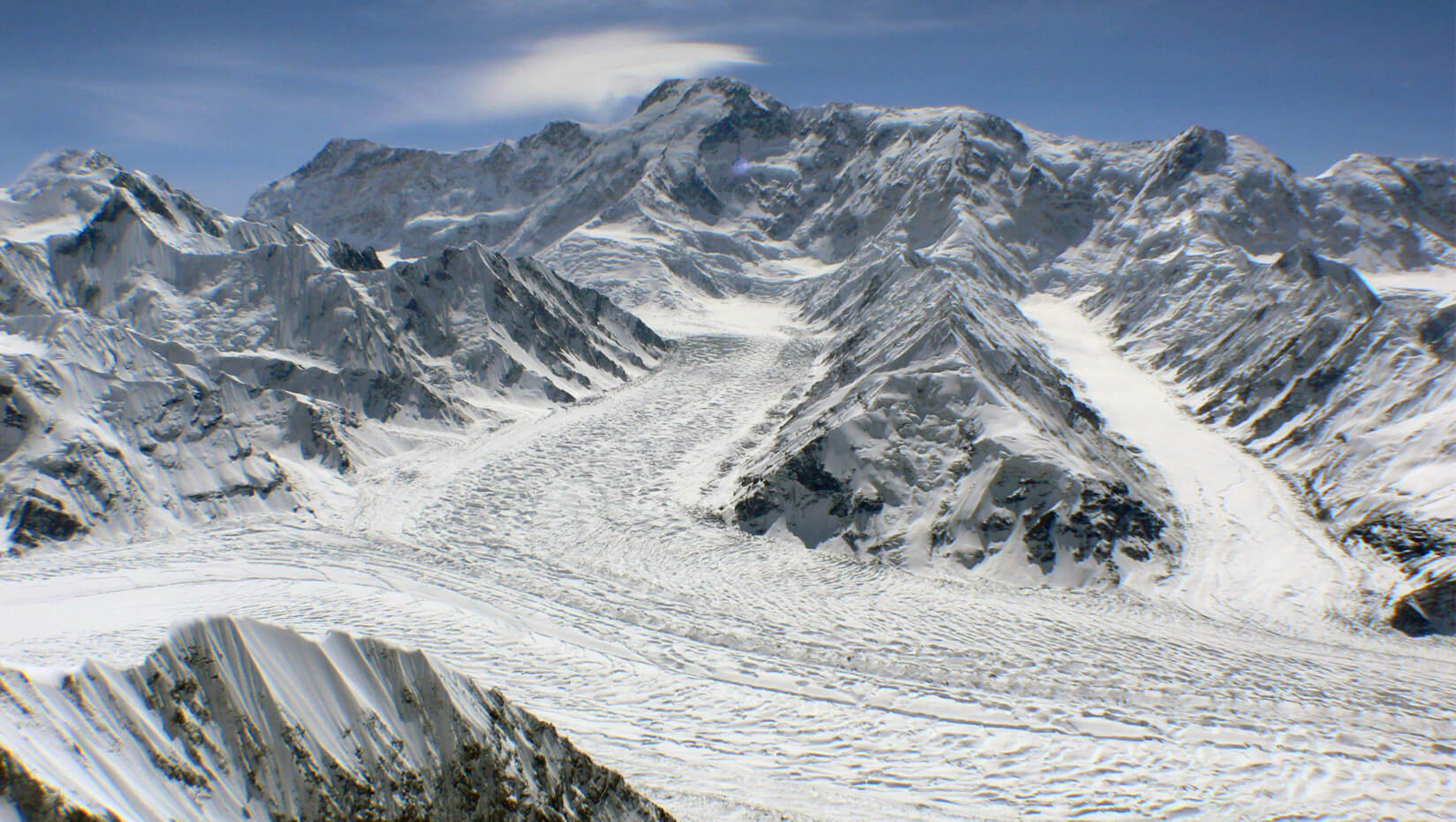
Grigholm: Ice cores indicate increases in atmospheric heavy metals
Glacial ice core records indicate that humans have significantly altered the atmosphere in Central Asia during the 20th century, say climate scientists from the University of Maine.
Climate Change Institute researchers say evidence from ice cores extracted from Inilchek Glacier in the Tien Shan Mountains in Kyrgyzstan reveals that rapid growth of industry and agriculture since the 1950s has led to large-scale increases in atmospheric concentrations of heavy metals.
Elevated levels of pollutants began appearing in the glacial ice during the 1950s and rapidly increased during the late 1970s and early 1980s, says Bjorn Grigholm, a recent UMaine doctoral graduate and lead researcher who examined high-resolution ice core evidence from 1908 until 1995.
Subsequently, there were abrupt declines during the 1980s and increases during the 1990s. These late 20th-century patterns reflect the decline of the Soviet Union, as well as the rapid growth of industry and agriculture in western China, says Grigholm.
The pollutants — from metal production, fossil fuel combustion, fertilizer use and waste incineration — threaten natural ecosystems and human health, say scientists.
Research has shown that people exposed to these pollutants have sustained damage to nervous system development and severe respiratory, kidney and bone disorders.
The Inilchek Glacier is an ideal natural archive for reconstructing regional evolution of human-made pollutants because of its proximity to Soviet and Chinese industrial and agricultural centers that expanded quickly during the mid-to-late 20th century, says Grigholm, a former research assistant and IGERT (Integrative Graduate Education and Research Traineeship) fellow.
In addition to providing historical evidence of the rapid industrialization of Central Asia, Inilchek ice core element records provide a baseline for future regional monitoring of atmospheric composition, he says.
Paul Mayewski, Karl Kreutz, Kirk Allen Maasch, Michael Handley and Sharon Sneed, all from CCI and the School of Earth and Climate Sciences, conducted the research with Grigholm.
Vladimir Aizen and Elena Aizen from the University of Idaho and Cameron Wake from the University of New Hampshire, as well as Shichang Kang from the Chinese Academy of Sciences, also joined CCI explorers for the collaborative project.
Their article, “Mid-twentieth century increases in anthropogenic Pb, Cd and Cu in central Asia set in hemispheric perspective using Tien Shan ice core,” was published in Atmospheric Environment.
Contact: Beth Staples, 207.581.3777
